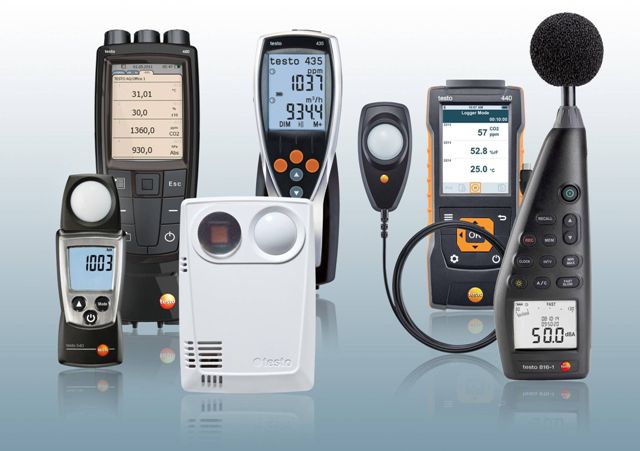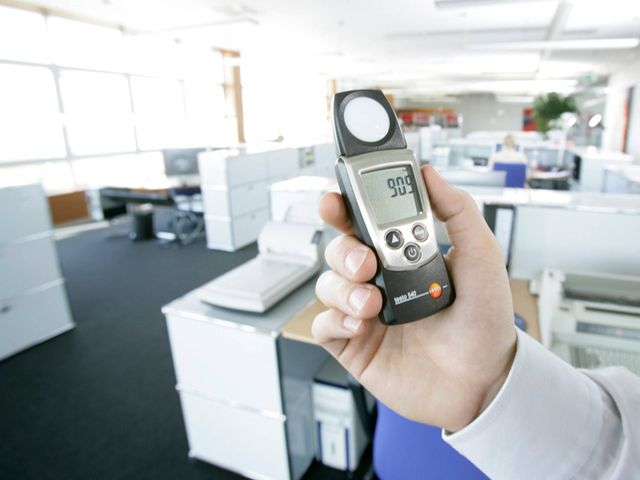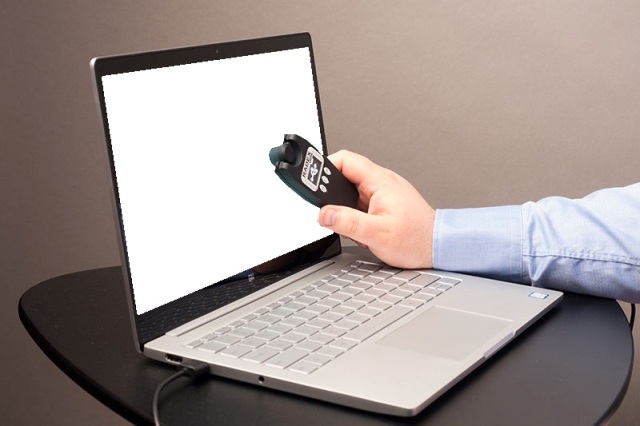Categories: Featured Articles » Sources of light
Number of views: 2338
Comments on the article: 0
How to use and measure illumination with a light meter
A photometric instrument for measuring illumination is called a light meter. In addition to direct illumination, many light meters also measure brightness, and some measure light ripple. These measurements are carried out in order to determine the quality of light sources, as well as the characteristics of lighting at the workplace and at home.
The fact is that light affects our eyes and mood. Dim light or light with significant ripples causes eye strain, fatigue, depression ... To prevent this, the light must be properly configured, the lamps must be of good quality. In achieving these goals, the light meter also helps.

The light meter photosensor senses the visible radiation directed at it, which initiates a current in the measuring device circuit, the magnitude of which is proportional to the illumination. Thus, by the magnitude and other parameters of this current, one can judge about illumination and other parameters of light: about brightness, about ripples.
Measurements using a light meter must be carried out correctly in order to obtain adequate measurement results, and then based on them to properly adjust the lighting of the workplace and premises in the house or at work, so that the parameters of the light used fit into sanitary standards. Next, we’ll talk about measuring illumination, brightness, the ripple coefficient of light, how to measure it, and some important related things.

Illumination
By illumination we mean the ratio of the luminous flux in lumens to the area in square meters that this luminous flux falls on. Illumination is independent of the direction of the light source and measured in suites (1 Lx = 1 Lm / sq.m).
By measuring the light with a light meter, we check the conditions of our own stay, as well as the environment for indoor plants and pets. In addition, based on the received indications of current illumination, various photo and video equipment is set up.
Measurements of the illumination of surfaces are carried out as follows: the light meter is transferred to the appropriate mode, and then placed on the surface so that its photosensor is directed towards the light source or light sources, if there are several of them illuminating this surface. After that, click on the button for taking measurements, and read the readings from the display of the device.
Thus, we will determine how much light hits the surface from all sides. When you need to know the parameters of only one lighting device, such as a table lamp, other devices (chandelier, lamp, etc.) are extinguished during the measurement.

Regulated standards (SANPIN 2.2.1 / 2.1.1.1278-03) indicate the lower limit of illumination:
-
work desks and rooms - 500 Lx;
-
for computer tables, reading tables and game rooms of kindergartens - 400 Lk;
-
for libraries and workshops - 300 Lx.
In low light, vision problems develop., fatigue quickly sets in, labor productivity drops. This is especially true of engineering and school rooms, where a lack of light leads to rapid eye fatigue from overvoltage. Therefore, care should be taken to ensure that there is enough light.
Brightness
Brightness reflects how intensely light is emitted from the surface of a unit area. Measured brightness in Candela per square meter. Since this characteristic strongly depends on the reflectivity of the surface, the brightness in different directions may differ for the same illumination.
Both insufficient and excessive brightness of light sources and screens cause a person to feel emotional discomfort, which worsens the concentration of attention and labor productivity. Therefore, for example, the brightness of the monitor screens must be adjusted correctly. Surfaces of lighting devices are usually not flat, so measuring is not easy.

The screen brightness is measured as follows: a solid white fill is displayed on the screen, then the device is switched to the brightness measurement mode. The photocell of the light meter is brought to a distance of 1 cm to the screen. If you measure the brightness of the lamp, the steps are similar, but you can measure several places, and after that - average the readings.
During measurements, the device is held motionless. Click the button. Read the result from the display. The most optimal brightness of the monitor screen is around 200 cd / sq.m. If more - it is harmful to the eyes and nervous system.
Light ripple coefficient
The ripple coefficient is a characteristic that reflects the unevenness of the light flux over time, expressed as a percentage. It can be a ripple of light and a ripple of brightness. There is a regulation regarding the norms (SP 52.13330.2011), based on medical research.
Doctors have found that pulsations with a frequency of up to 300 Hz, being perceived by the human eye, have a detrimental effect on the human nervous system, at least the natural hormonal background is disturbed and natural biorhythms are distorted. Therefore, you need to know the degree of pulsation of the light emitting devices that surround you: lamps, displays, even a smartphone.
The ripple measurements are carried out as follows: a light meter with the function of measuring the ripple coefficient is transferred to the appropriate mode and placed on a flat surface (table, floor, niche, etc.) so that the light flux of the light source is directed directly to the photosensor of the device. After pressing the measurement button, you can read the readings from the display of the luxmeter.
If the pulsations of the display are measured, then the photosensor is simply brought as close as possible to the display. It is important that the light source first reaches its rated mode (for example, a daylight lamp takes 5 minutes to do this). Make sure that third-party light sources and objects do not affect your measurements.
According to the regulated standards, light pulsations in bathrooms, waiting areas, workshops should not exceed 20%, for offices the upper limit is 15%, for residential premises - 10% and for workrooms - 5%. If the coefficient of pulsations of light is higher, then this will negatively affect the performance, mood and the state of the central nervous system as a whole.
See also at bgv.electricianexp.com
:
